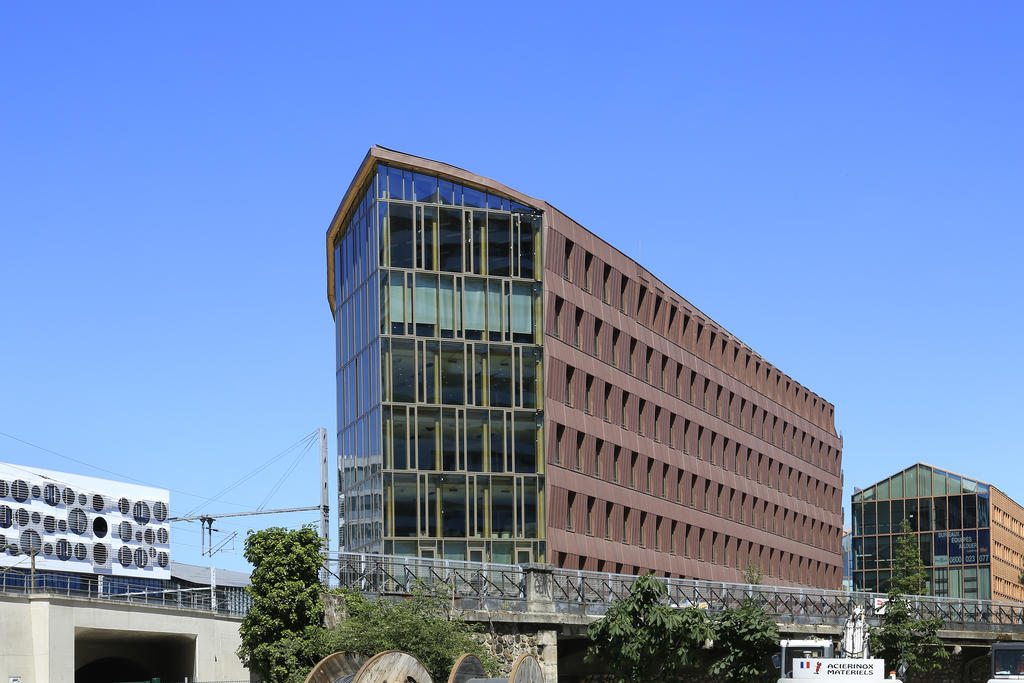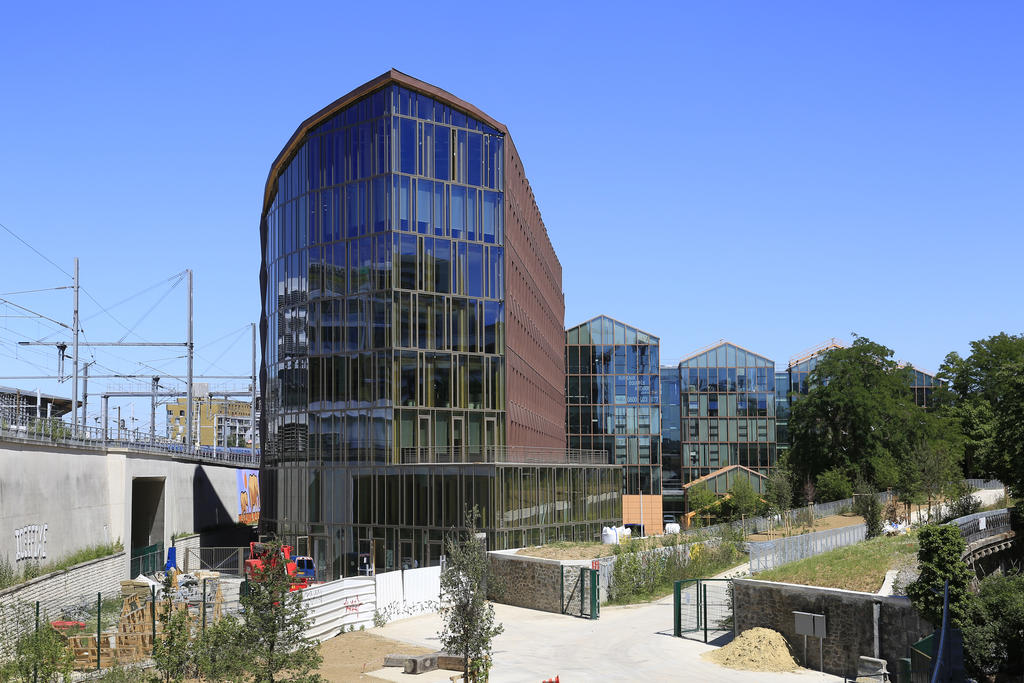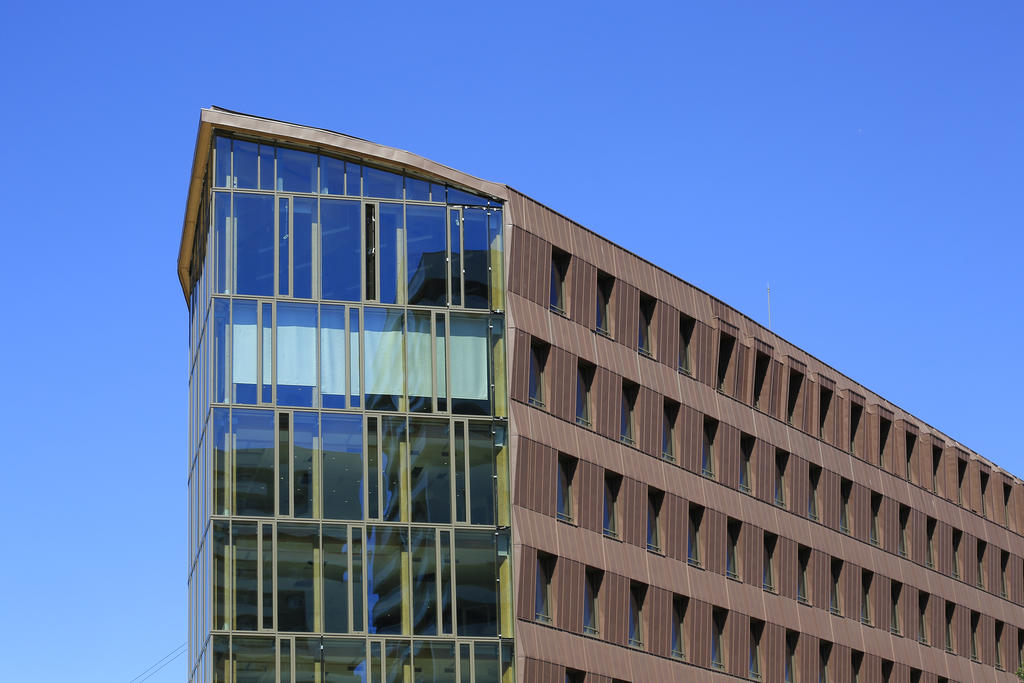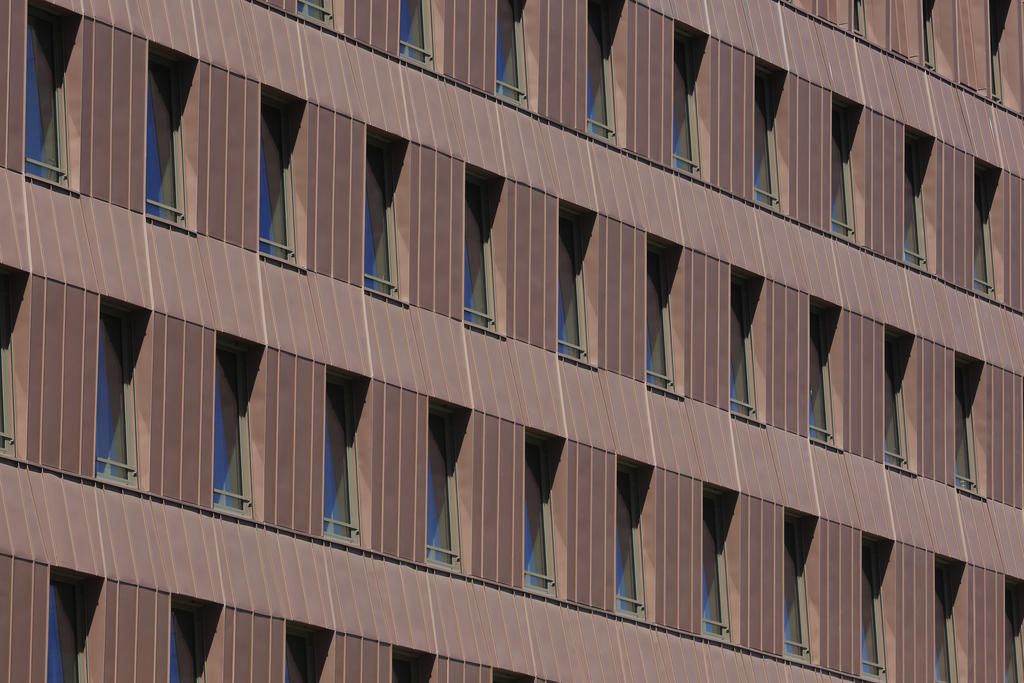
Bureaux Pont de Flandres - Rosa Parks, Paris (France)
- Location Paris, France
- Architects Anne Carcelen
- Technique(s) Finishings, VMZINC Standing seam
- Aspect(s) PIGMENTO Red
- Application Type Facade
- Contractor(s) BALAS
- Copyright Paul Kozlowski
Silence and colour
The warehouses of the Paris general stores were erected in the north of Paris in 1854, benefitting from the opening of a canal connecting major industrial clusters in the capital. Several rail tracks were gradually built around the site, which continued to be used for storage up to the 1960s. In the 2000s, these 100,000 m 2 of warehouses were converted into a huge shopping district, a forerunner to the recovery of a neglected area of the city.
The old buildings were redeveloped, new office buildings designed by the Chaix and Morel architecture firm were constructed. They borrow from the volumes of the first four warehouses designed by engineer Émile Vuigner in 19th century.
The building designed by Anne Carcelen is the 13th and last that was built on this 10-ha site. The architect took account of the evolution of the venue and the changes made to the neighbourhood. On the other side of the railway tracks, the redevelopment of the old Macdonald warehouses, placed the extremity of the plot in a central urban position along a strategic pedestrian pathway. This meant that the project had to serve as a signal, which seemed unlikely given its peripheral position within this tertiary zone. From the street, it looks like an imposing, majestic vessel navigating through the flow of rail and waterway infrastructures.
Several conceptual innovations underly this dynamic form, designed entirely using BIM and supported by a mixed timber and concrete structure. Renewal of the facade principals defined by Chaix and Morel in 2000 also resulted in a mixed envelope, made up of two glazed gables revealing the timber structure, and two main facades in PIGMENTO ® red.
The malleability of the material is fully exploited. Installed from the apex of the roofing to the foot of the facade, the sides of the building are fully clad in zinc. The latter absorbs the varying sizes of the dormer windows on the last floor. The BIM model made it possible to precisely lay out each window module. The facade itself is made up of a succession of horizontal facets with two different angles per floor. The zinc sheets were installed on timber bases that create relief on the facade. This system is not formalistic, but it reduces noise pollution from trains by reflecting the noise back towards the railway tracks or the sky, rather than the facades of the neighbouring apartment buildings. A wall of seamed metal, much more attractive than a sound abatement wall and just as effective.


